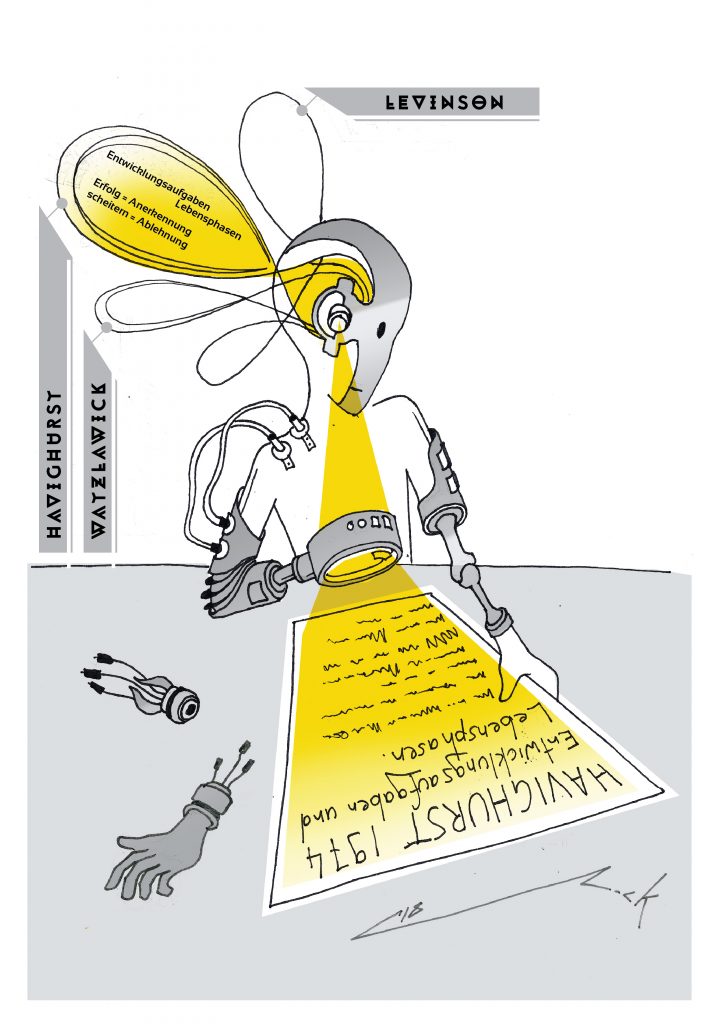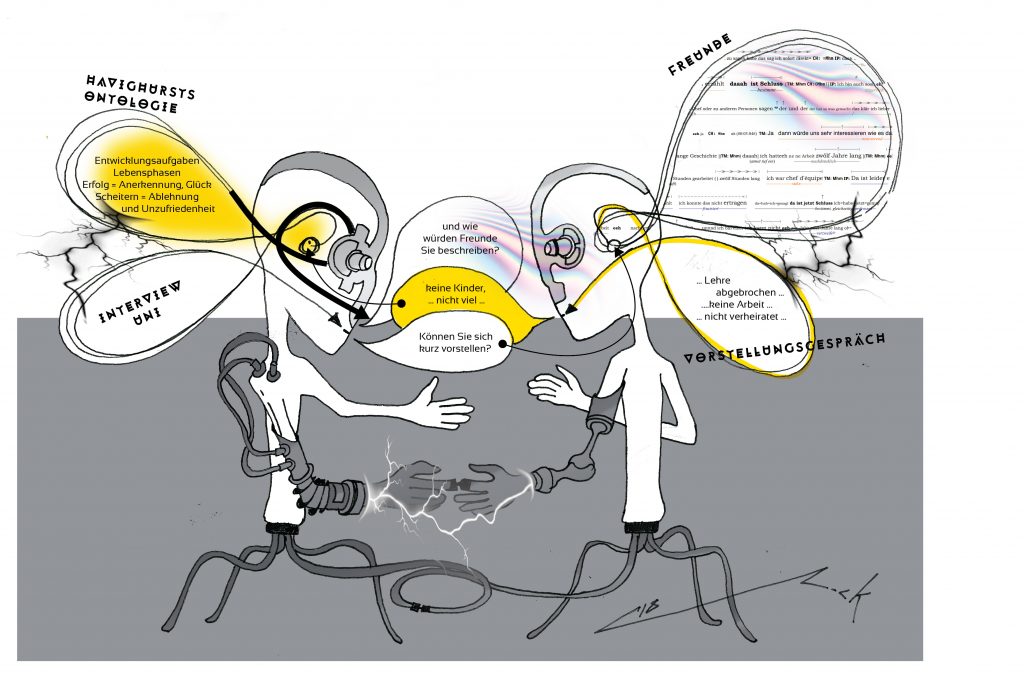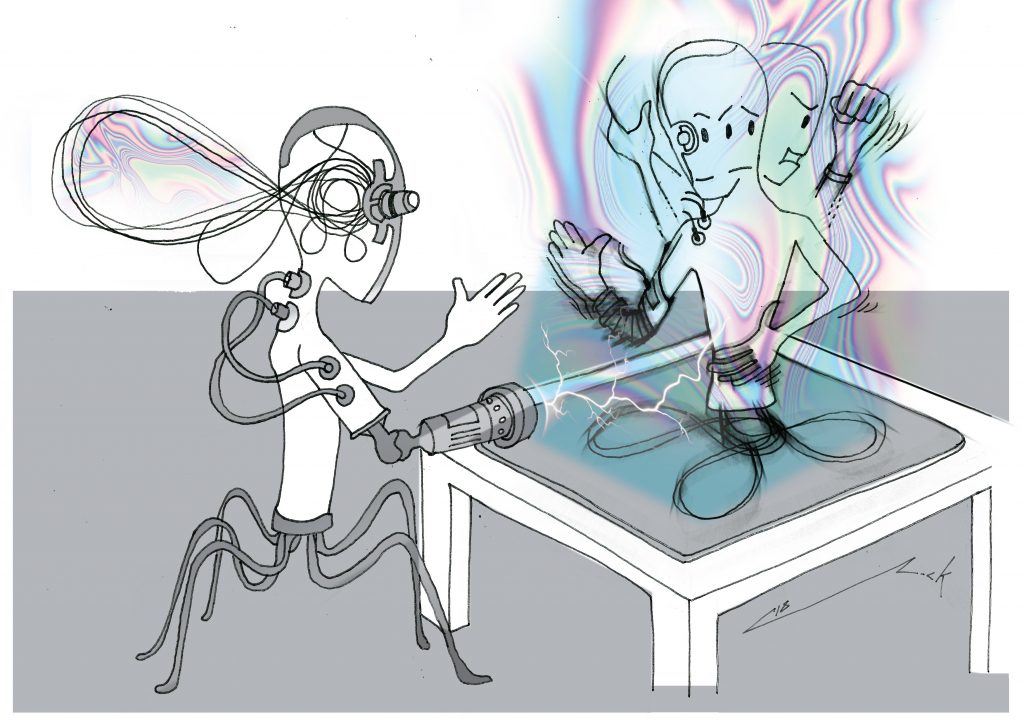Usually, the pre-conference seminars are addressed to young researchers and students advanced enough to exchange on their own work with those more experienced. Sometimes such pre-conference seminars also include workshops on research methodology.
 This year’s pre-conference seminars appear in a little different “perspective”, as they draw on the “theoretical” as well as “methodological” movement realized by Claude Haas and Thomas Marthaler – both senior lecturers and researchers at the University of Luxembourg’s IRISS institute, and co-organizers of this year’s conference – and their numerous associates, among others Nicolas Uhler. With the general conception of this conference being based on Haas, Marthaler and associates’ “work in progress”, the pre-conference seminars shall offer an opportunity to familiarize up front with the so-called “theory of scales” (2015a, 2015b, 2017) and some of its “applications” (2016).
This year’s pre-conference seminars appear in a little different “perspective”, as they draw on the “theoretical” as well as “methodological” movement realized by Claude Haas and Thomas Marthaler – both senior lecturers and researchers at the University of Luxembourg’s IRISS institute, and co-organizers of this year’s conference – and their numerous associates, among others Nicolas Uhler. With the general conception of this conference being based on Haas, Marthaler and associates’ “work in progress”, the pre-conference seminars shall offer an opportunity to familiarize up front with the so-called “theory of scales” (2015a, 2015b, 2017) and some of its “applications” (2016).
 The invention of the “theory of scales” as well as its “applications” in research, teaching and social and educational work practice has been inspired by the works of various so-called post-structural and post-plural authors, such as social anthropologists Marilyn Strathern (1990, 1995, 2004a, 2004b & 2013), Roy Wagner (1981, 1986 & 2001) and Annemarie Mol (1998 & 2002), the sociologist Andrew Abbott (2001 & 2004) and also researchers from within science and technology studies, such as Casper Bruun Jensen (2007 & 2010) or Christopher Gad (2013).
The invention of the “theory of scales” as well as its “applications” in research, teaching and social and educational work practice has been inspired by the works of various so-called post-structural and post-plural authors, such as social anthropologists Marilyn Strathern (1990, 1995, 2004a, 2004b & 2013), Roy Wagner (1981, 1986 & 2001) and Annemarie Mol (1998 & 2002), the sociologist Andrew Abbott (2001 & 2004) and also researchers from within science and technology studies, such as Casper Bruun Jensen (2007 & 2010) or Christopher Gad (2013).
Basically, the “theory of scales” can be considered more of a “heuristic ontology” to create sensitivity towards and make “visible” the continuous invention work of persons-in-scaling-work-at-places-in-time. The notion of scaling work refers to the human activity of cutting the “world” into interrelated entities or symbolic elements. More specifically, and with regard to so-called “Western pluralism”, it refers to the manner in which entities are ordered into domains of different levels or magnitudes. With reference to Wagner (1981), the “theory of scales” considers that entities acquire their sense only through their multiple contextual associations. Hence, it follows a relational approach (this is where the hyphen formulation within the above mentioned “formula” comes from), assuming that it could be both theoretically and methodologically more interesting to invent “reality” as being “fractal” and multiple, in the sense that it is continuously performed anew by persons-in-scaling-work-at-places-in-time.
 With time passing by, the work of Claude Haas, Thomas Marthaler and associates converged into the invention of an “original” research methodology and “another way” of academic teaching. At the same time, they reinvented social and educational work practice as relational and scaling-sensitive bricolage work. In this context, the notion of bricolage refers to the fluidity and thus unpredictability of scaling work of persons-at-places-in-time. Therefore, the “fact” of “tinkering” (which might be the closest possible direct translation of the French verb “bricoler”) has to be considered not as a result of insufficient planning but as a part of the inventive and creative “art” of social and educational work practice. Furthermore, it should be noted that Claude Haas and Thomas Marthaler creatively use fractal images (e.g. Cantor dust, Mandelbrot set) and allusions to the figure of the cyborg within their “conceptualization” work.
With time passing by, the work of Claude Haas, Thomas Marthaler and associates converged into the invention of an “original” research methodology and “another way” of academic teaching. At the same time, they reinvented social and educational work practice as relational and scaling-sensitive bricolage work. In this context, the notion of bricolage refers to the fluidity and thus unpredictability of scaling work of persons-at-places-in-time. Therefore, the “fact” of “tinkering” (which might be the closest possible direct translation of the French verb “bricoler”) has to be considered not as a result of insufficient planning but as a part of the inventive and creative “art” of social and educational work practice. Furthermore, it should be noted that Claude Haas and Thomas Marthaler creatively use fractal images (e.g. Cantor dust, Mandelbrot set) and allusions to the figure of the cyborg within their “conceptualization” work.
Should these partial explications have raised your interest, please feel free to take Claude Haas, Thomas Marthaler and associates’ invitation for July, 1st, 14h00 to 17h30. The organization of the pre-conference seminars largely depends on the number of inscriptions. Content-wise, the participants have the opportunity to discover applications of the “theory of scales” in research, teaching and social work practice.
Haas C. & Marthaler, T. (2015a). Vom Mappen zum Skalieren von sozialen Feldern. Matrix Working Paper Series. Working Paper 1 (19.p). Luxembourg: Université du Luxembourg.
Haas C. & Marthaler, T. (2015b). Vom Individuum und Akteur zur relationalen Person. Matrix Working Paper Series. Working Paper 2 (20.p). Luxembourg: Université du Luxembourg.
Haas, C., Marthaler, T. & Uhler, N. (2016). Gemeinwesenarbeit als relationale skalierungssensible Örtlichkeitsarbeit. Matrix Working Paper Series. Working Paper 7 (11.p). Luxembourg: Université du Luxembourg.
Marthaler, T. & Haas, C. (2016). Arrangieren und Relationieren. Ein etwas anderer Zugang zur Wohlfahrtsgeschichte. Sozial Extra, 40(1), 39 – 42
Marthaler, T. & Haas, C. (2017). Politische, soziale und rechtliche Systeme und der “westkulturelle Pluralismus”. Matrix Working Paper Series. Working Paper 10 (22 p.). Luxembourg: Université du Luxembourg
—————–
Abbott, A. (2001). Chaos of Disciplines. Chicago: The University of Chicago Press.
Abbott, A. (2004). Methods of Discovery. Heuristics for the Social Sciences. New York: Norton & Company.
Gad, C. (2013). A Postplural Attitude. Reflections on subjectivity and ontology. NatureCulture, 2(1), pp. 50-79.
Jensen, C. B. (2007). Infrastructural fractals: revisiting the micro – macro distinction in social theory. Environment and Planning D: Society and Space, 25(5), 832-850. doi:10.1068/d420t.
Jensen, C. B. (2010). Ontologies for Developing Things. Making Health Care Futures Through Technology. Rotterdam: Sense Publishers.
Mol, A. (1999). Ontological politics. A word and some questions. In: J. Law & J. Hassard (Ed.), Actor Network Theory and after (pp. 74-79). Oxford: Blackwell Publishing.
Mol, A. (2002). The Body Multiple: Ontology in Medical Practice. Durham & London: Duke University Press.
Strathern, M. (1990). The Gender of the Gift. Berkeley: University of California Press
Strathern, M. (1995). The Relation: Issues in Complexity and Scale. Cambridge: Prickly Pear Press.
Strathern, M. (2004a). Partial Connections (2nd ed.). Walnut Creek: Rowman & Littlefield.
Strathern, M. (2004b). The Whole Person and Its Artifacts. Annual Review of Anthropology, 33, 1-19. doi: 10.1146/annurev.anthro.33.070203.143928.

